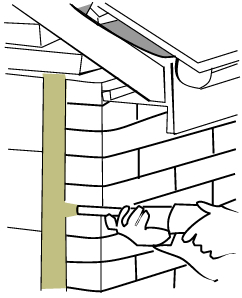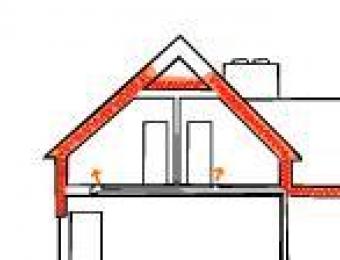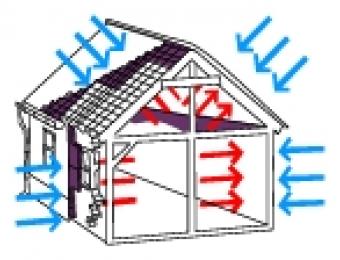
Heat transfer through walls
Making sure your walls are properly insulated is an important part of creating a good thermal envelope for your home. Up to 10%-20% of heat is lost through the walls in colder months, while up to 15%-25% of heat can be gained through the walls in warmer periods - not even accounting for heat loss or gain through windows. Insulating to prevent heat from escaping and entering through your walls makes a big difference to how well you're able to regulate the temperature in your home.
What are thermal bridges - and how do they affect wall insulation?
Thermal bridges (or heat bridges) are paths through the walls and structure of your home that heat can travel along from the inside to the outside of your house (and vice versa). They can be things as simple as doors and windows (or door and window frames). Often they're hidden in walls - steel is a very effective heat conductor, and if you have a steel-framed house, you should definitely consider how the frame will allow pathways for heat to travel through your insulation.
Heat bridges are almost like leaks in your thermal envelope, and can lower the overall R-value of your home, especially in the walls. Incorporating well thought-out thermal breaks and insulating carefully to compensate for possible thermal bridges will help to reduce their effects.
Types of insulation for walls
Though just about any insulation type can be used in a wall, some are naturally more suited to walls than others. The more commonly used insulation types for walls include:
- Fibreglass / glass wool batts
- Rock wool batts
- Blow-in cellulose
- Natural wool batts
- Polyurethane foam
Structural insulated panels (SIPs), straw bales, autoclaved aerated concrete (AAC) and certain other structural wall materials are inherently good insulators in their own right. Homes constructed using these types of materials aren't likely to need any further insulation, and are much less likely to suffer from thermal bridging issues.
New walls vs. retrofits
It's far easier and much cheaper to install decent insulation when your walls are being built than to try and improve your insulation further down the track. These days, all new homes need to comply with certain minimum requirements for R-values in a home. It's much better to exceed these from the start than find out later the minimum values are not sufficient for your needs, though.
Some insulation types are easier to retrofit than others; blow-in cellulose or foam insulation, for instance, can be piped into your walls through a small hole drilled into a wall cavity. Retrofitting a wall with batts, on the other hand, means that the wall has to be stripped back to the frame. This obviously involves much more effort and cost to reseal the whole wall again rather than to plaster up a few small drilled holes.
If you're looking at adding insulation to existing walls, make sure you consider the effort involved as well as the cost of the insulation material.





